There's something super romantic about escaping to Southern Africa's dazzling deserts. It feels a bit like stepping back in time or even being transported to a different planet. From unique safari experiences to hiking up dunes at sunrise in the oldest desert in the world, there's something alluring about seeing Mother Nature's rougher side.
So, don your best desert outfit, and let's go explore, honey!
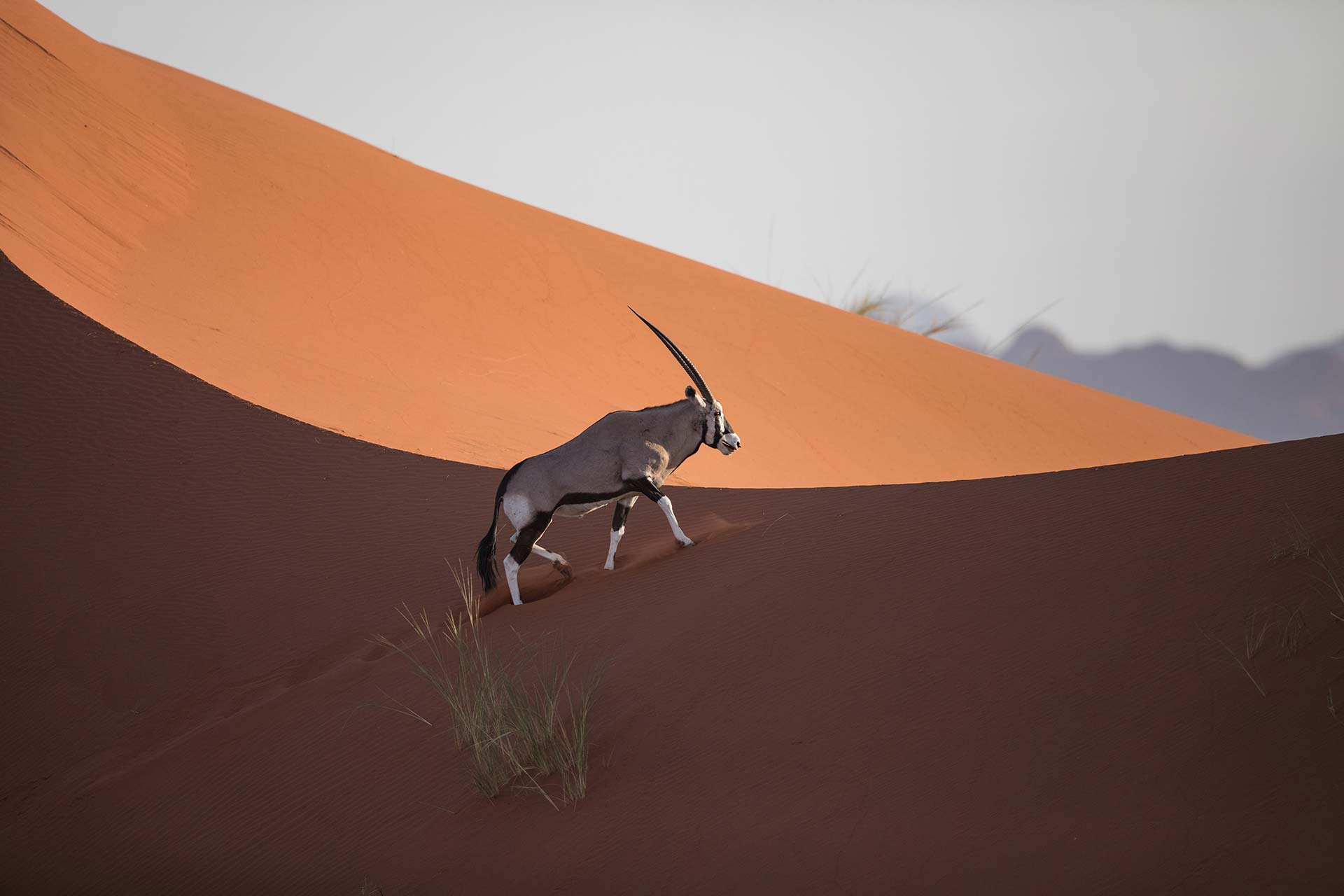 A lone oryx roams the Namib Desert, Image Credit: andBeyond
A lone oryx roams the Namib Desert, Image Credit: andBeyond
1. The Namib Desert (Namibia)
As the oldest desert in the whole wide world, you can trust that this will be an experience to remember. The Namib Desert in Namibia has been said to have been dry for at least 55 million years! It's a wildly popular destination for LBGTQ+ travellers like yourself, and you'll love how remote and almost eerie it is.
Stretching inland from the Atlantic Ocean, the Namib Desert lies on the coastline of Namibia. The name "Namib" is of the Khoekhoegowab origin and means "vast place", a fitting description of this massive desert! And it is indeed big, extending over 2,000 kilometres and crossing not only over Namibia but also Angola and South Africa's coastlines.
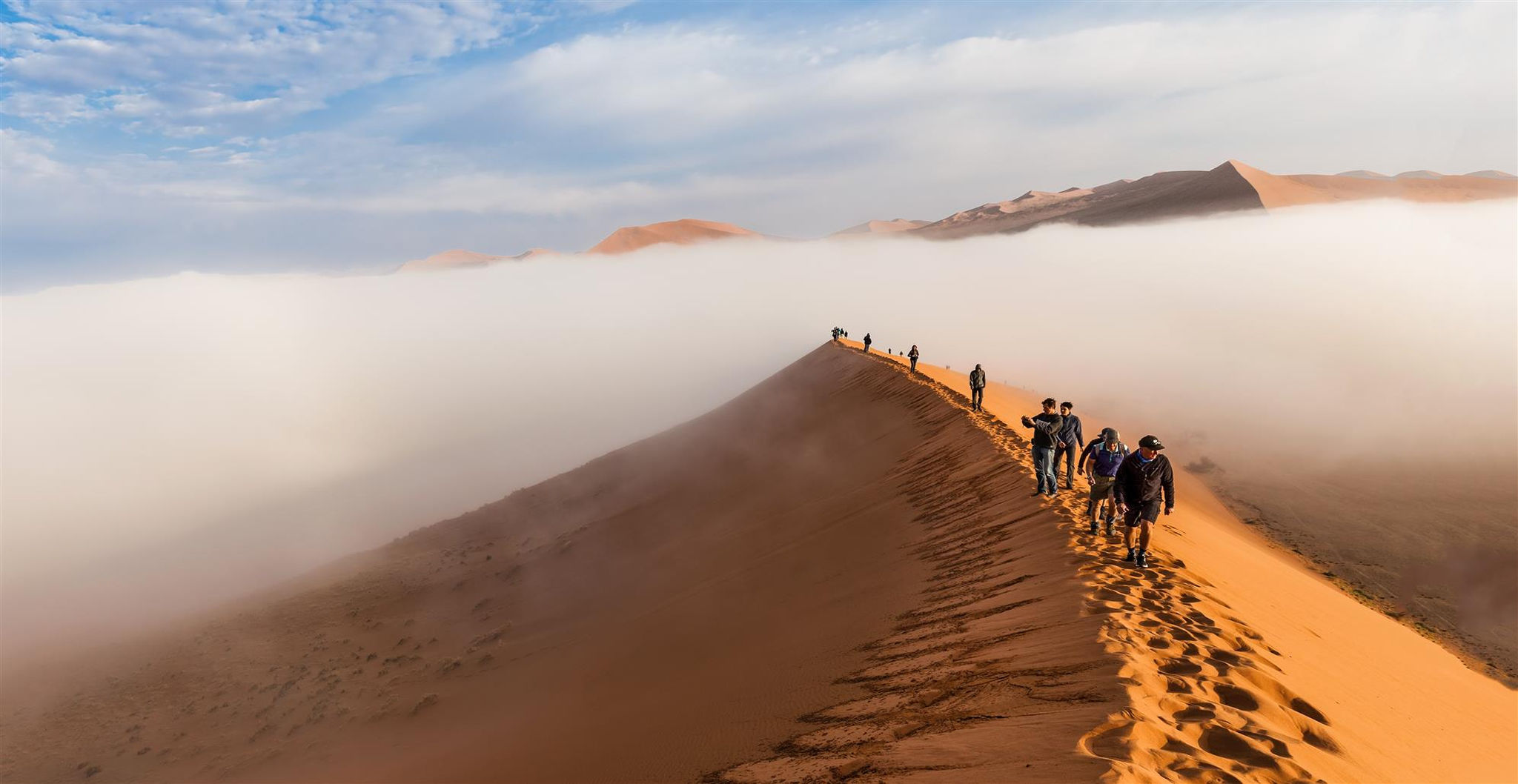 When the fog rolls in through the Namib Desert
When the fog rolls in through the Namib Desert
Unusual Desert Climate
One of the most puzzling things about the Namib Desert is the almost disorienting feeling you get when you're standing in the desert and suddenly feel cold air, noticing a thick layer of fog that's passing through the dunes.
This fog rolls in from the ocean and is the life-giving force that sustains the animal and plant species found here. We're so here for this juxtaposition, and we're sure you'll find it just as fascinating!
Desert Safari Experiences in the Namib
As you can tell by now, you should expect the unexpected in the Namib Desert! Well, other than the oryx (gemsbok) roaming the desert, you can expect to see the mountain zebra, short-eared elephant shrew, Karoo bustard, and more species that have adapted to the harsh conditions.
The desert is also home to many succulent plant species and the shrub-like Welwitschias, which is said to be able to live for more than 1000 years! Now that's impressive, given their location and that they only have two leaves.
 A hot air balloon ride is a must-do activity in the Namib Desert
A hot air balloon ride is a must-do activity in the Namib Desert
Taking in the Views
When visiting the Namib Desert, the most popular activity is to hike up the dunes, in particular the Dune 45 and the highest one called Big Daddy. A whopping 325 metres high, it's a fair trek that will take you about an hour (and those calf and thigh muscles will have to put in the work to keep you from slipping down in the sand!) However, it's so worth the view (and bragging rights) when you get to the top! You'll feel like royalty looking down on your kingdom.
Another favourite activity is to go on a hot air balloon ride to really soak in the magnitude and magnificence of the Namib Desert. Or, if you prefer to stay put on the ground, you can chase around in quadbikes to rev up your adrenaline.
The Best Time to Visit the Namib Desert
The best time to visit is generally between May and October, as you can expect clear skies for the best photographing and stargazing opportunities. At Out2Africa, we recommend this time of year as the dry winter is also the best time for game viewing safaris in areas such as Etosha National Park, the weather is more moderate, and malaria risk is at its lowest.
If you visit in September and October, you can expect very hot weather. On the other hand, June and July can be freezing at night, and rainfall is at its highest between November and April, which could lead to desert flooding and unique photo opportunities.
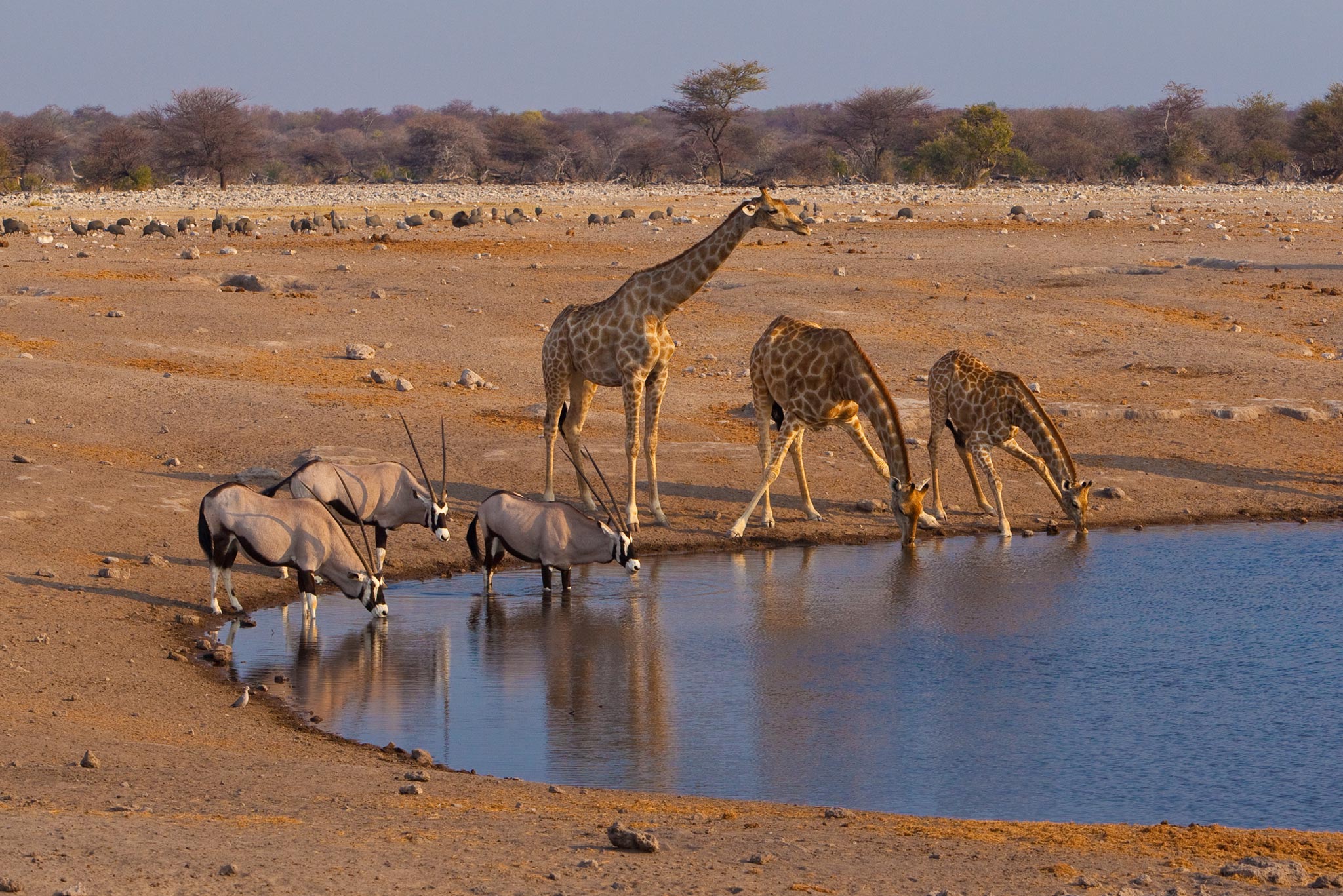 Admire the wildlife gathering at scarce water sources, Image Credit: Rovos Rail
Admire the wildlife gathering at scarce water sources, Image Credit: Rovos Rail
2. The Kalahari (Botswana, South Africa, Namibia)
The Kalahari Desert extends across three countries, namely South Africa, Namibia and the largest part is found in Botswana. It's 900,000 kilometres squared (350,000 sq mi) in size. Although it's referred to as a desert (fun fact), it can't fully be classified as a desert as it receives a bit more rainfall than your textbook desert. The Kalahari with its vast rippling dunes, scattered with shrublands, is known as the largest continuous stretch of sand in the world.
Flourishing Fauna and Flora
The impossible is possible in the Kalahari, with an astonishing array of flora and fauna thriving in the unforgiving desert climate. And you'll be surrounded by different sights, from broad-leafed woodlands, semi-arid dune veld, and dry savannah thornveld.
The best part? The Kalahari is one of the most sparsely populated places on Earth! We love this as it really helps you block out the world's noise so you can just tap into the soothing embrace of Mother Nature.
We highly recommend a digital detox while you're in the desert! Switch that phone to aeroplane mode, honey. We're going off the grid!
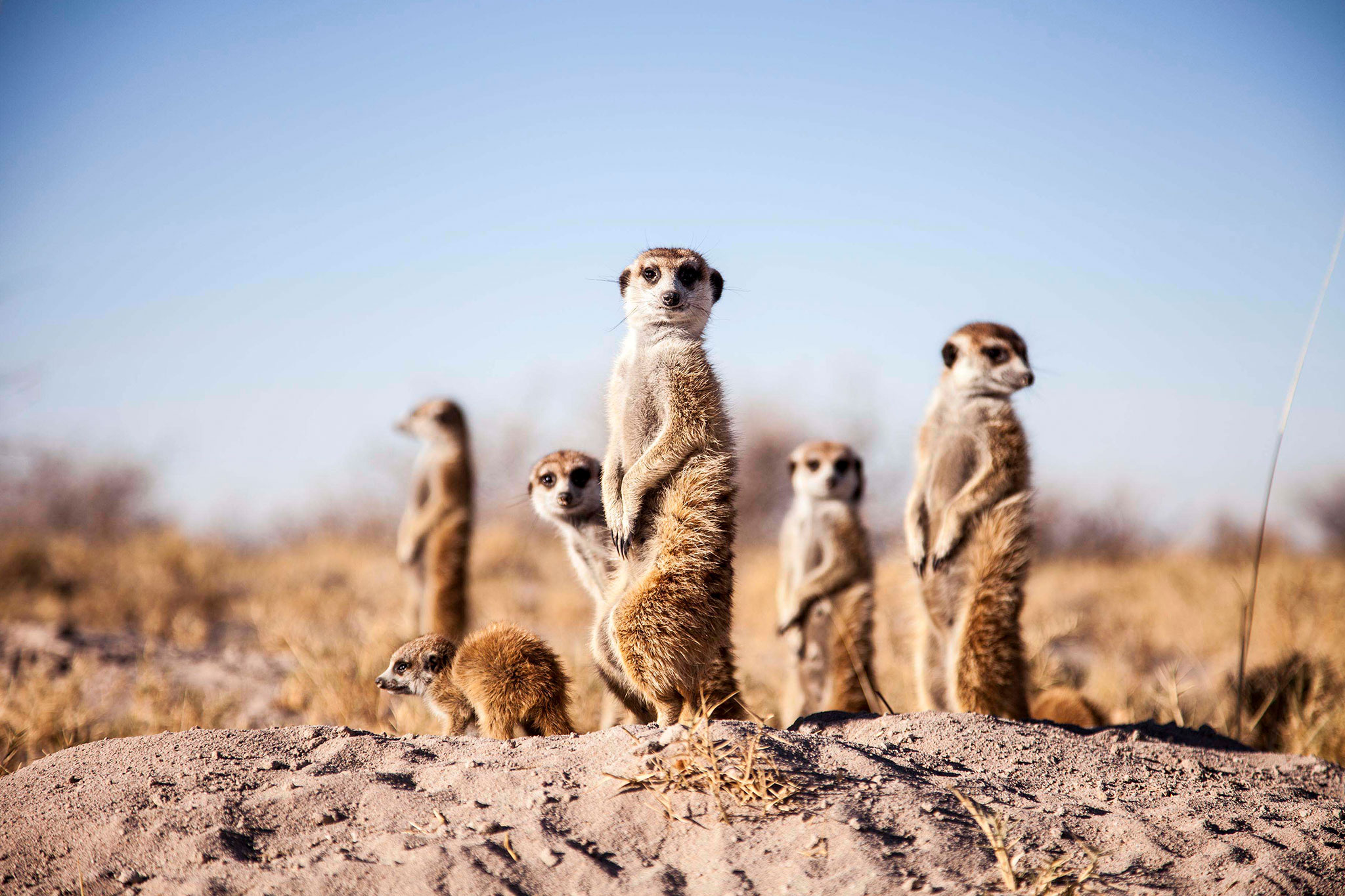 Visit the meerkat colonies, Image Credit: Camp Kalahari
Visit the meerkat colonies, Image Credit: Camp Kalahari
Kalahari Safari Adventures
We adore the Kalahari Desert, regardless of which country you visit. If you go to Botswana, your best safari experience is in the Central Kalahari Game Reserve or the Makgadikgadi Pans.
In South Africa, you should go to the Kgalagadi Transfrontier Park or Tswalu Kalahari, the largest private game reserve in the country. If you're travelling to Namibia, combining your trip to the Kalahari with a stay in the Fish River Canyon is a great idea.
There are plenty of activities on offer in the desert, but what we love most is the incredible stargazing opportunities, game drives, horseback riding safaris, and bush walks!
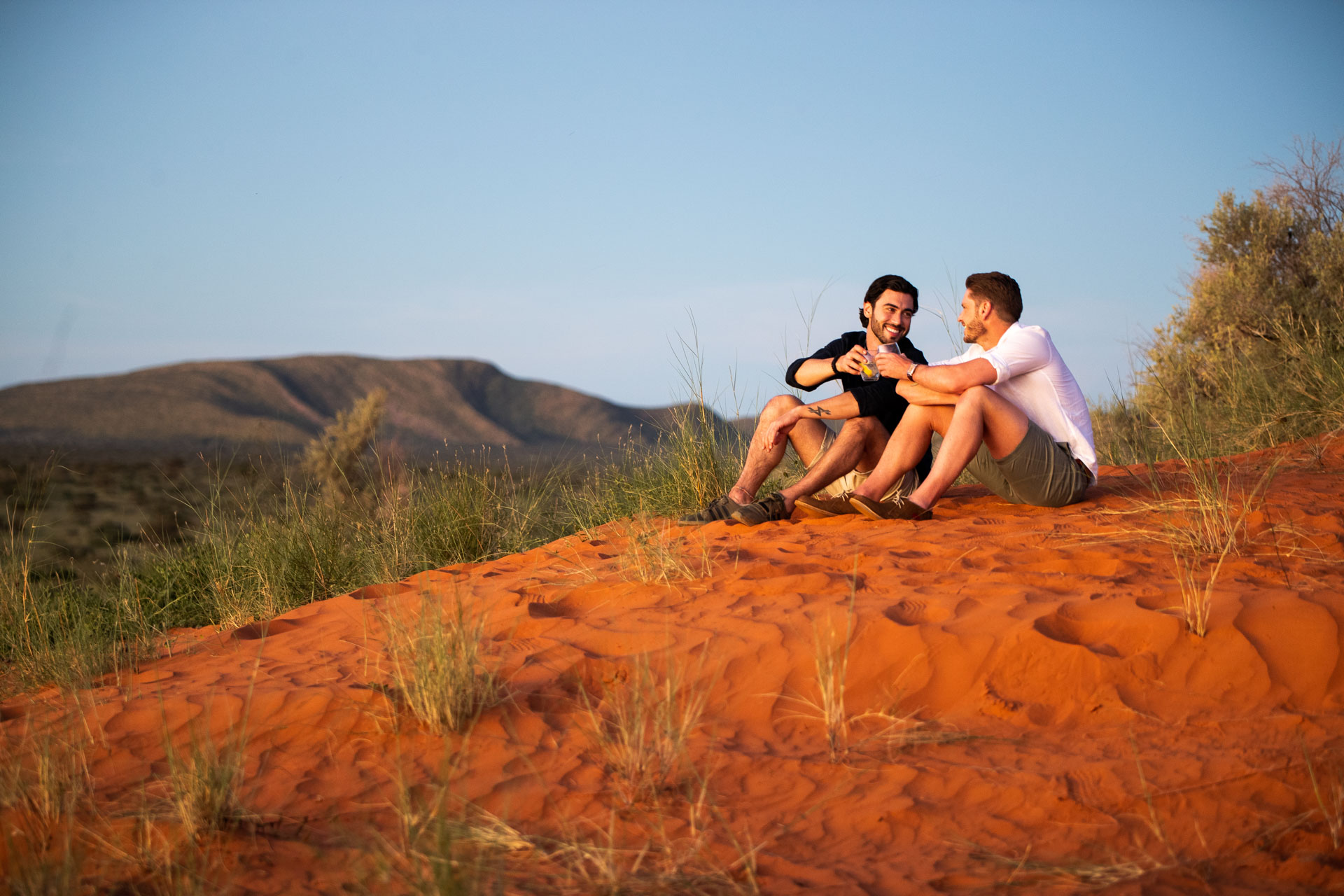 Sundowners in the Kalahari Desert
Sundowners in the Kalahari Desert
Best Time to Visit the Kalahari Desert
Although you can enjoy game viewing throughout the year, the best time to visit the Kalahari Desert is between July and August. During this time, wildlife gathers around the few remaining water sources, making for excellent photo opps. If you visit between September and October, you can expect very hot weather during the day.
Visiting during the wet season from December to April will give you plenty of newborn wildlife sightings and the zebra migration. Or, if you're not afraid of a bit of rain, you can also visit during the early summer between December and January.
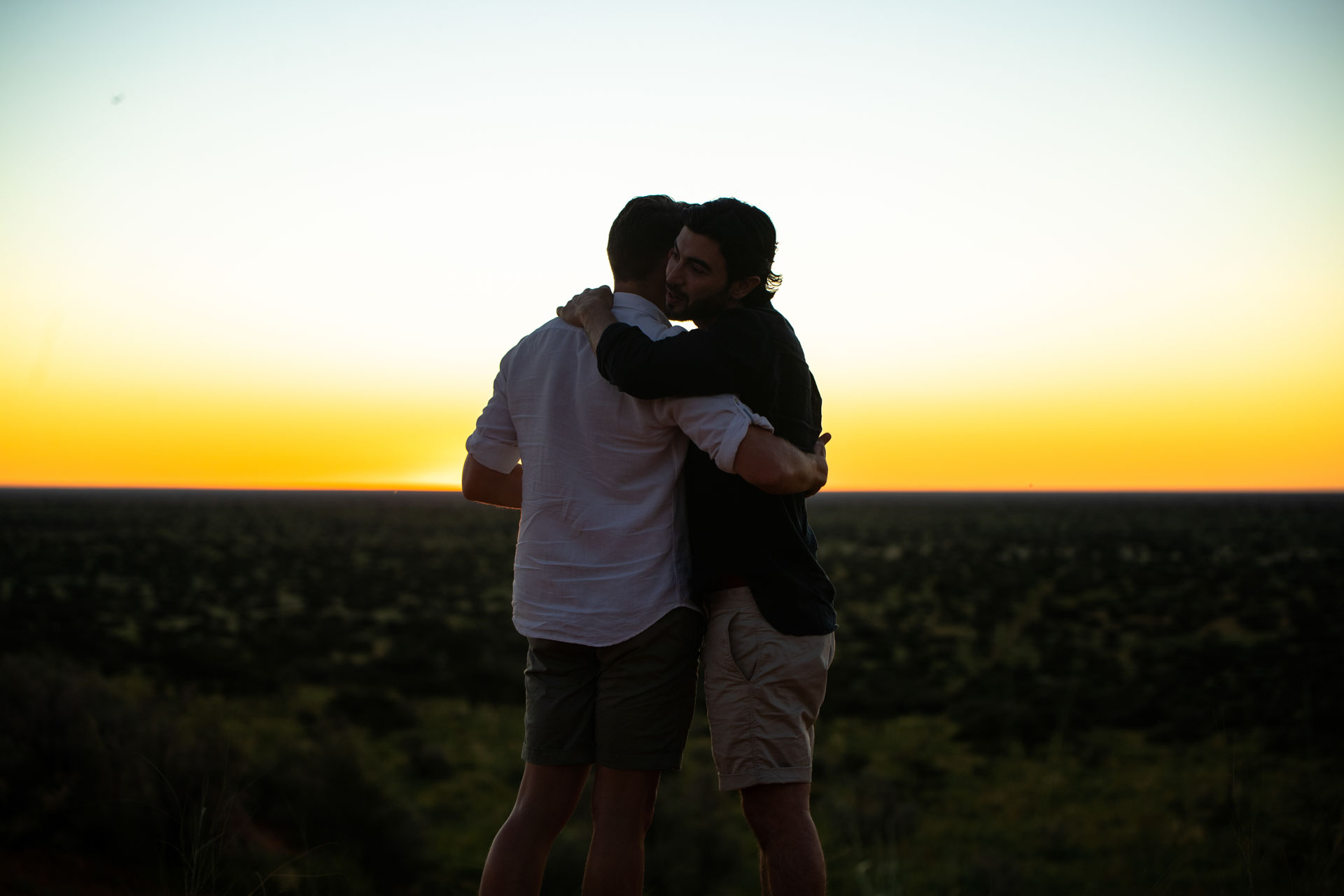 Dreamy sunsets will make you feel even more in love with each other
Dreamy sunsets will make you feel even more in love with each other
3. Klein Karoo (South Africa)
The Klein Karoo in South Africa is found on the iconic Route 62. An arid semi-desert, you will find unique vegetation, game and reptile species at home here. And spanning 76,000 hectares, it's the perfect place to leave all your worries behind.
Exploring the Klein Karoo
We love going on a self-drive road trip to the Klein Karoo as there are so many interesting small towns and farm stalls with delicious treats and treasures along the way to explore. The area is also home to ancient Khoi-San rock art, and we highly recommend you visit the Valley of Desolation, where you can marvel at the 120-metre-high dolerite columns!
For those active travellers, there are plenty of mountain biking and hiking trails to explore, which can take you to the site where the very first reptile fossils were found. You can also see plenty of game and the famous Verreaux's eagle found here.
The Klein Karoo is famous for offering the best stargazing, plus there is a diverse range of wine farms in the area, most notably their dessert wines. Dessert wine in the desert, anyone? We also recommend you take a drive to visit the Cango Caves in Oudtshoorn and one the many ostrich farms.
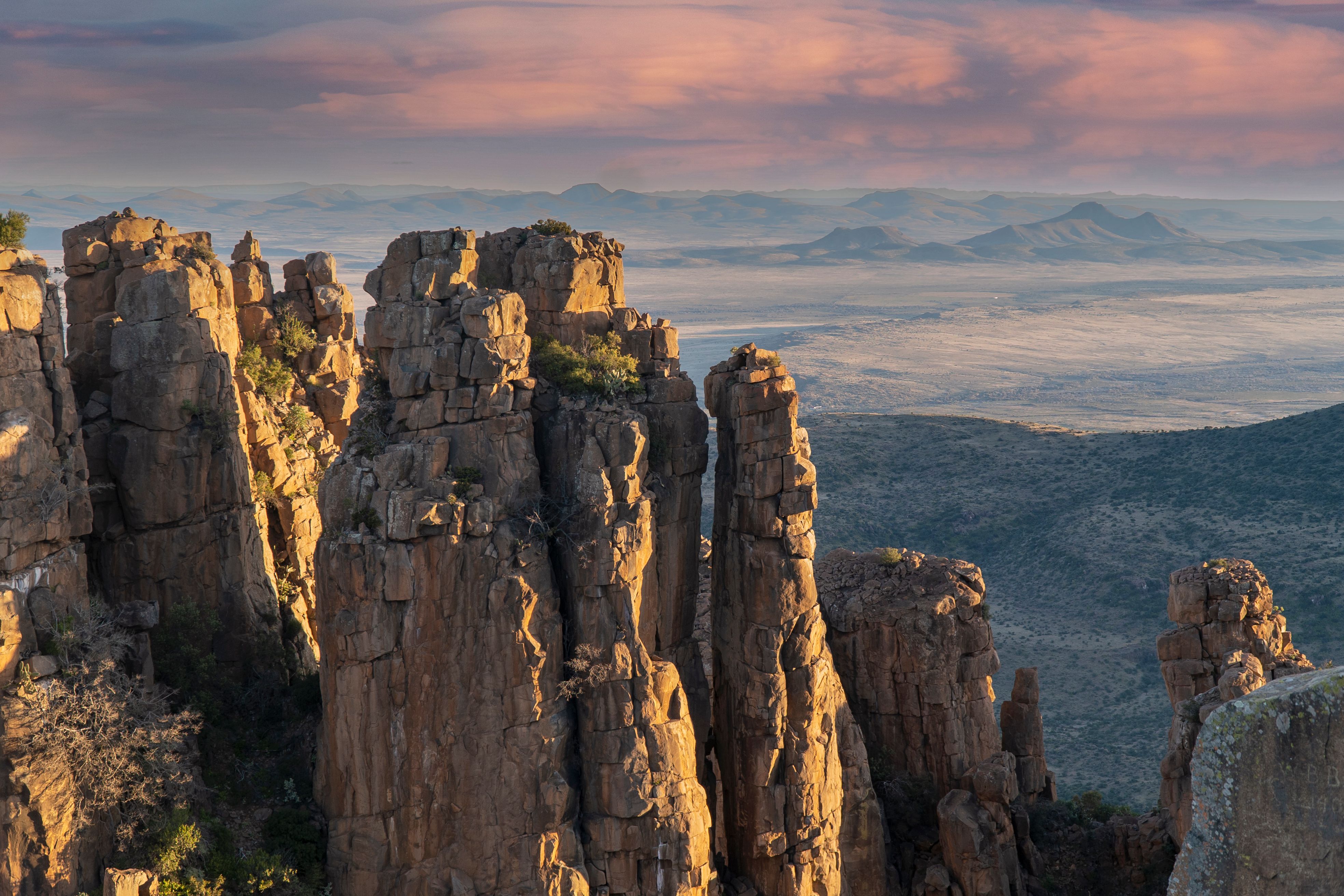 The Valley of Desolation in Graaff Reinet, Klein Karoo
The Valley of Desolation in Graaff Reinet, Klein Karoo
The Best Time to Visit the Klein Karoo
The best time to visit the Klein Karoo is at any time of the year, as the different seasons do not really influence wildlife viewing experiences. However, summer and winter do offer quite extreme temperatures, so the best time to visit if you enjoy more temperate weather is in August and September and again in April and May.
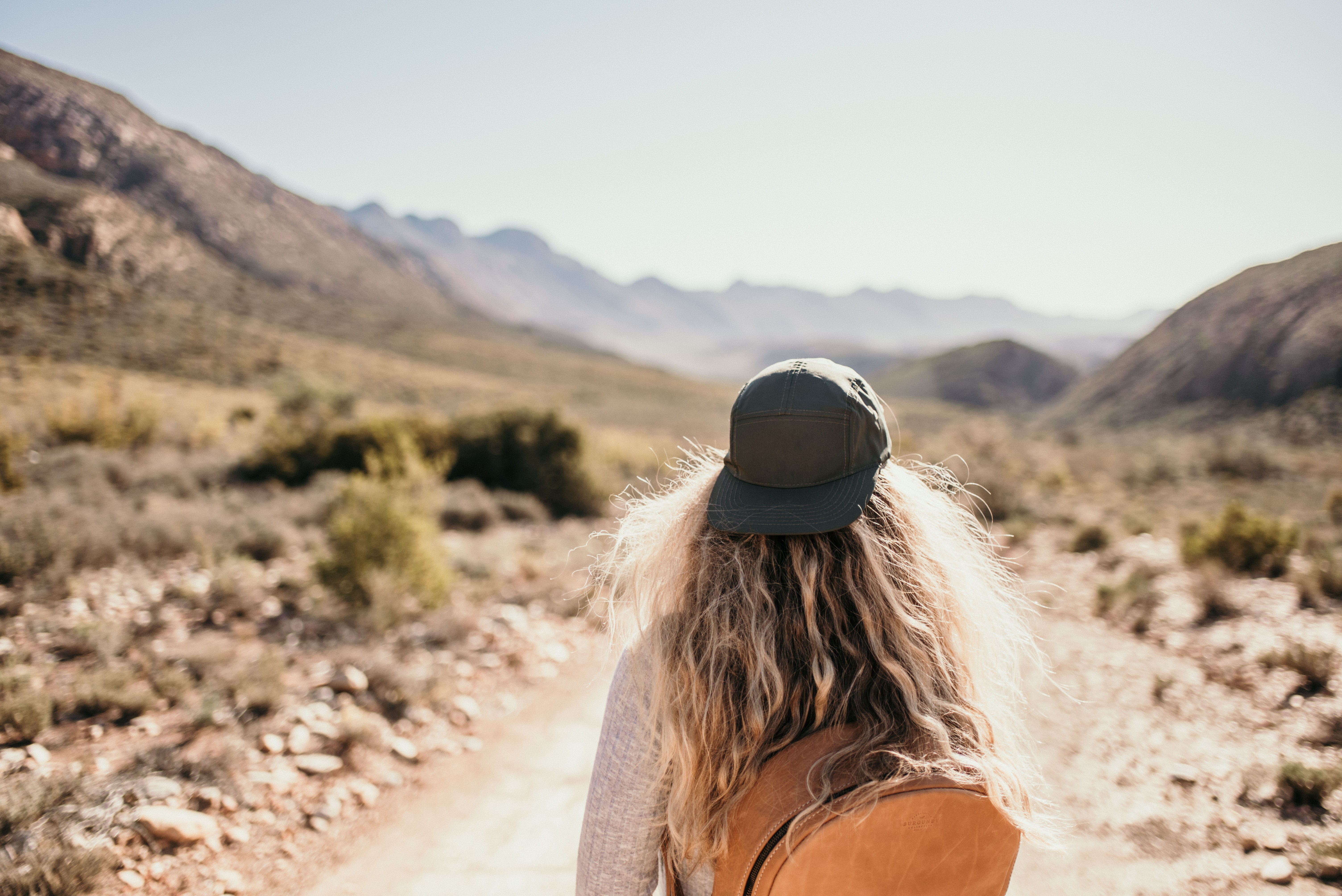 Hiking through the Klein Karoo brings a sense of inner peace
Hiking through the Klein Karoo brings a sense of inner peace
Honey, Let's Go Desert Hopping!
Are you already longing for wide-open desertscapes? So are we! And luckily for you, we know all the most fabulous LGBTQ+-friendly places to go. Our Travel Experts can tailor-make a unique desert trip for you, taking all your yes-please and no-thank-yous into account.
Let's start planning your epic desert safari!
